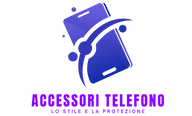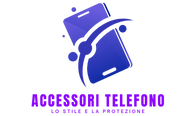Blog
Discover Spinanga App – Revolutionizing Your Daily Tasks and Enhancing Productivity
Table of Contents
- Discover Spinanga App – Revolutionizing Your Daily Tasks and Enhancing Productivity
- Unleashing the Potential of Spinanga for Daily Management
- How Spinanga Organizes Your To-Do List Seamlessly
- Setting Priorities: Making Your Tasks More Manageable
- Integration Features that Simplify Daily Routines
- Syncing with Other Productivity Tools: A Perfect Match
Discover Spinanga App – Revolutionizing Your Daily Tasks and Enhancing Productivity
Efficient management of responsibilities has become crucial in today’s fast-paced environment. The emergence of innovative digital solutions has fundamentally reshaped how Spinanga individuals prioritize their obligations. By streamlining various functions, one platform stands out as a game-changer for those seeking to optimize their workflow.
This intuitive tool integrates essential features that cater to a diverse range of needs, allowing users to customize their experience. Whether you are coordinating complex projects, balancing personal commitments, or simply trying to stay organized, this platform provides a comprehensive approach to tackling challenges. Its user-friendly interface simplifies navigation between different functions, ensuring that even novice users can harness its full potential.
Data-centric methodologies are implemented within this platform, enabling real-time tracking of progress and outcomes. Users can take advantage of advanced analytics that reveal insights into how time is allocated across various endeavors, facilitating informed decision-making. Furthermore, the option to collaborate with team members seamlessly fosters enhanced communication, ensuring alignment on shared objectives.
Adopting this innovative solution promises not only to save time but also to elevate overall performance levels. By leveraging its capabilities, individuals can unlock new avenues for success, reimagining how they approach their commitments and aspirations.
Unleashing the Potential of Spinanga for Daily Management
Integrating Spinanga into management practices allows users to streamline their routines effectively. With its dynamic features, this platform provides tools for organizing priorities, setting reminders, and automating repetitive activities. Such capabilities facilitate a sharper focus on significant objectives.
Utilizing custom labels for categorizing projects permits a more structured overview of ongoing commitments. Users can tailor task groups, making transitions between different responsibilities smoother. Incorporating color-coded systems can further enhance visual clarity, making it easier to identify urgent matters at a glance.
Moreover, leveraging the collaboration features fosters teamwork through shared access to lists and progress tracking. Communication within the platform ensures that everyone remains aligned, which minimizes misunderstandings and increases overall efficiency. Implementing regular check-ins or status updates within the app can also keep everyone accountable and engaged.
To maximize the benefits of the platform, consider the integration of data analytics tools. By analyzing completed actions and time spent on each section, users can identify patterns in productivity and areas that require improvements. This feedback loop aids in refining personal strategies for tackling future responsibilities.
Finally, establishing a routine for daily check-ins with the interface cultivates discipline. Setting aside a few moments each morning to plan the day can lead to better outcomes, as it promotes proactive engagement with activities rather than reactive scrambling when deadlines approach.
How Spinanga Organizes Your To-Do List Seamlessly
Effectively managing a task list demands a streamlined approach that prioritizes efficiency. This tool integrates various features designed to simplify list management, allowing users to focus on crucial elements rather than getting bogged down by clutter. Here’s how the organization mechanism works:
Tasks can be categorized into distinct groups, enabling users to segment responsibilities based on projects, deadlines, or priorities. This classification ensures that nothing slips through the cracks and provides a comprehensive overview.
| Priority Setting | Assign levels of urgency to each task, helping to tackle the most critical items first. |
| Due Dates | Set reminders and deadlines to keep track of time-sensitive obligations. |
| Recurring Tasks | Automate the addition of regularly occurring items, simplifying repetitive entries. |
| Collaboration Tools | Share lists with team members, enhancing coordination and collective oversight. |
| Progress Tracking | Monitor completion rates to evaluate productivity and motivate further action. |
The system also offers a simple drag-and-drop interface for reordering entries, allowing for quick adjustments in priority without extensive modifications. This flexibility caters to dynamic environments where priorities can shift rapidly.
Notifications ensure that users stay informed about upcoming deadlines and uncompleted items. This proactive approach aids in maintaining focus and responsibility towards commitments.
Incorporating various visual aids, such as color coding and progress bars, provides immediate insight into task status. This feature enhances motivation and engagement by making the information easily digestible at a glance.
Ultimately, utilizing such a structured framework fosters a more organized mindset, leading to more effective execution of duties and a significant reduction in oversight. By harnessing modern technology, individuals can enhance their workflow with minimal effort and maximum clarity.
Setting Priorities: Making Your Tasks More Manageable
Effective prioritization is essential for managing workloads efficiently. Begin by assessing the importance and urgency of each responsibility. Utilize the Eisenhower Matrix, a two-by-two grid that categorizes tasks into four segments: urgent and important, important but not urgent, urgent but not important, and neither urgent nor important. This framework allows for clear distinction and aids in making informed decisions on what to tackle first.
Next, list obligations using the SMART criteria: Specific, Measurable, Achievable, Relevant, and Time-bound. Each activity should have a clear goal, ensuring that it aligns with broader objectives, making evaluation straightforward.
Another technique is the ABCDE method. Rank each undertaking from A (most critical) to E (least important). Focus efforts on A-level responsibilities initially, as they yield the highest impact. Consequently, delegate or eliminate lesser priorities whenever feasible.
Time blocking is another effective strategy; allocate specific time slots for addressing various commitments. This method helps in visualizing workloads and creates a structured agenda, reducing the likelihood of derailment and distraction.
Regularly revisiting priorities is key. Weekly reviews can reveal shifts in urgency or relevance, allowing for adjustments. Track progress on significant objectives to stay motivated and focused on completion.
Lastly, embrace digital tools capable of facilitating organization and tracking. Many software solutions enable easy visualization of tasks and deadlines, significantly improving overall efficiency in managing commitments.
Integration Features that Simplify Daily Routines
Seamless connectivity with external platforms is crucial for streamlining operations in any workflow. By linking with widely-used calendars like Google Calendar or Outlook, users can synchronize appointments and reminders without manual entry. This integration ensures that all upcoming events are accessible in one place, eliminating scheduling conflicts.
Task management is further enhanced by the inclusion of project management software compatibility, such as Trello or Asana. By integrating these tools, users can transfer tasks effortlessly, allowing for real-time updates on progress and deadlines. This approach not only reduces redundancy but also fosters collaborative efforts across teams.
Automating communication through email platforms, like Gmail or Outlook, can significantly reduce the time spent on routine correspondence. Users can set up predefined templates to respond quickly to common queries, allowing for efficient communication without sacrificing quality.
Data synchronization with cloud storage services, such as Google Drive or Dropbox, provides a centralized hub for accessing files. Users can easily share documents across their devices, ensuring fast retrieval and collaboration without the hassle of multiple file versions.
Incorporating analytics tools is essential for tracking performance metrics. By linking with applications like Google Analytics, individuals can monitor their work efficiency and adjust their strategies accordingly, ultimately leading to more informed decision-making.
Integrations with smart home devices can further streamline daily activities. Users can control lights, thermostats, and other IoT devices through the interface, enabling a more coordinated environment that enhances overall living and working conditions.
Customizable workflow automation through services like Zapier allows users to create tailored processes that reflect their unique needs. By connecting disparate applications, users can automate repetitive actions, reducing manual input and increasing focus on strategic objectives.
Syncing with Other Productivity Tools: A Perfect Match
Integrating various productivity solutions can significantly optimize workflow efficiency. By establishing seamless connections with popular software, users can streamline their processes and save valuable time.
Here are some key tools that complement synchronization efforts:
- Google Calendar: Syncing with this scheduling tool allows users to manage their time effectively. All appointments and reminders are automatically updated, avoiding conflicts and ensuring nothing is missed.
- Trello: By linking with this project management platform, individuals can create and track tasks visually. This integration facilitates real-time updates, making collaboration effortless.
- Slack: Connecting to this communication hub enhances team collaboration. Notifications and task updates can be sent directly to channels, fostering better communication across teams.
- Evernote: Syncing with this note-taking application enables users to keep important information at their fingertips. Any notes or ideas can be quickly accessed from any device.
To set up these integrations effectively, follow these steps:
- Access the settings menu of your primary productivity solution.
- Locate the integrations or connections section.
- Select the desired tool from the list of available options.
- Authorize the connection and customize the settings based on specific needs.
Maintaining connectivity between these platforms allows for improved task visibility and reduces the repetitive nature of manual updates. Regularly check for new integrations as platforms evolve to create even more efficient workflows.




